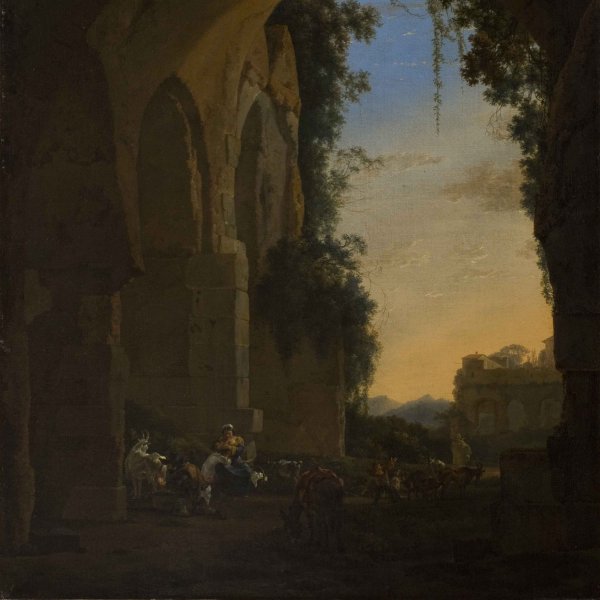Jan Asselijn
Jan Asselijn, a painter of French origin, was one of the most important members of the second generation of Italianate Dutch artists, together with Jan Both and Jan Partist. He trained in Amsterdam, the city to which his family emigrated around 1621 and where he is documented as living on 4 November 1635. Today – as Cornelis Hofstede de Groot pointed out in his own day – he is unanimously considered to have been a pupil of Jan Martszen de Jonge (c. 1609−after 1647), a painter specialised in battle scenes. There are two known works by Asselijn on this subject dated 1634 and 1635. He later travelled to southern Europe to perfect his painting and lived in Italy and France from 1636 to 1645. In Rome he was a member of the Bentvueghels, a group of northern painters specialised in sunny views of the countryside and Roman ruins, as well as picturesque scenes of everyday life. He was known among them as Krabbetje – meaning crab – because the fingers of his left hand were quite twisted.
Asselijn was also a skilled draughtsman and made many drawings during that period. At the end of 1644 he married a merchant’s daughter in Lyon and moved to Paris, but by 1646 he was back working in Amsterdam. During the following years he deeply influenced the Dutch art scene with his novel Italianate landscapes with ruins based on many of the drawings made during his stay in Rome. Art historian Filippo Baldinucci praised these exquisite views with ruins. His most innovative contributions to the genre were the large scale of his compositions, his vivid palette, and the characteristic silvery, ochre, and blue tones of his works. He depicted scenes at dawn or dusk, playing with the lights and shadows to create highly decorative effects that further emphasised the monumental size of the ruins, which he populated with merchants, peasants, and other figures. His works are housed in important collections such as those of the Alte Pinakothek in Munich, the National Gallery in Washington, the Hermitage in St Petersburg, and the Rijksmuseum in Amsterdam, among others. He died very young and was buried on 3 October 1652.





